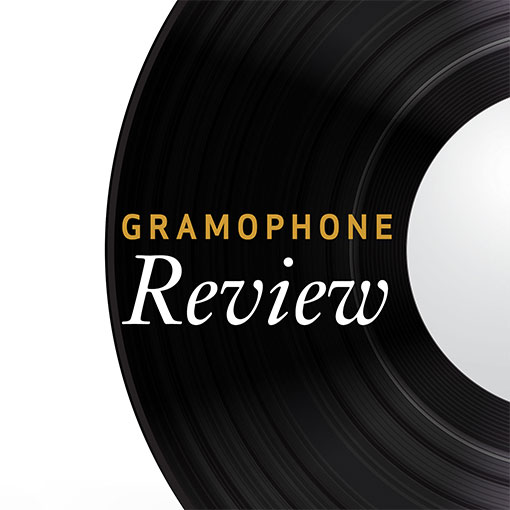Tchaikovsky Piano Concerto No 1; Suite No 4
View record and artist detailsRecord and Artist Details
Composer or Director: Pyotr Ilyich Tchaikovsky
Label: Collect
Magazine Review Date: 5/1990
Media Format: Cassette
Media Runtime: 0
Mastering:
Stereo
DDD
Catalogue Number: ABTD1413

Tracks:
| Composition | Artist Credit |
|---|---|
| Concerto for Piano and Orchestra No. 1 |
Pyotr Ilyich Tchaikovsky, Composer
Constantine Orbelian, Piano Neeme Järvi, Conductor Philharmonia Orchestra Pyotr Ilyich Tchaikovsky, Composer |
| Suite No. 4, 'Mozartiana' |
Pyotr Ilyich Tchaikovsky, Composer
Neeme Järvi, Conductor Philharmonia Orchestra Pyotr Ilyich Tchaikovsky, Composer |
Composer or Director: Pyotr Ilyich Tchaikovsky
Label: Collect
Magazine Review Date: 5/1990
Media Format: CD or Download
Media Runtime: 63
Mastering:
Stereo
DDD
Catalogue Number: CHAN8777

Tracks:
| Composition | Artist Credit |
|---|---|
| Concerto for Piano and Orchestra No. 1 |
Pyotr Ilyich Tchaikovsky, Composer
Constantine Orbelian, Piano Neeme Järvi, Conductor Philharmonia Orchestra Pyotr Ilyich Tchaikovsky, Composer |
| Suite No. 4, 'Mozartiana' |
Pyotr Ilyich Tchaikovsky, Composer
Neeme Järvi, Conductor Philharmonia Orchestra Pyotr Ilyich Tchaikovsky, Composer |
Author:
At their more conventional andante, Orbelian and Jarvi certainly launch the introduction in majestic style, helped by Chandos's characteristically spacious orchestral recording. But the piano's subsequent declamation of the theme is immediately stodgy, in part because what has preceded it has failed to get airborne; and after an impressive cadenza (where, however, Orbelian's best friend should have pointed out that the long downward figuration from 2'08'' contains C naturals rather than C flats) the return of the opening sounds like more of the same, instead of a revelation of the theme in all its glory.
Once into the main body of the movement Orbelian's delivery of the bouncing first subject is full of initiative (albeit at an extremely well-nourished piano); but once into the alternating semiquavers his limitations are again apparent, with relentless accents every half-bar in place of truly artistic shaping (which needs at the very least to embrace the preceding quaver upbeats). Thereafter it is the orchestra which produces the most distinguished playing—hear the wonderful 'covered' cantabile of the strings from 13'02'', for instance. Orbelian is a powerful and welldisciplined soloist, and he is by no means lacking in warmth, as the slow movement demonstrates. But he tends to be short on imagination, and in a work as well-known as this it is surprising that the producers passed his added-note harmony at 12'50'' in the first movement, his D flat for D natural at the end of the cadenza (20'17''), or his scales an octave apart at 1'50'' and 3'30'' in the finale (they should be two octaves apart). Also in the finale there is a sudden jump in recording level at 6'41''.
If you don't mind the occasional roughness of a live performance and a rather brash CBS recording I would continue to recommend Gilels and Mehta (on a mid-price reissue coupled with Zukerman in the Violin Concerto). The 1962 Richter/Karajan DG version is a mix of personalities which might have worked but didn't (Richter is incomparable in the five Rachmaninov Preludes which complete the disc, however). In 1971 Argerich and Dutoit, also on DG, were not entirely of one mind either, but their disagreements generate far more re-creative energy, and there are moments of blistering keyboard virtuosity (as there are in the coupling, Prokofiev's Third Concerto).
The new Chandos issue also features a delectable account of Tchaikovsky's Mozart orchestrations. Not all the individual contributions are as characterful as on Svetlanov's Olympia/Conifer disc (the Russian solo violinist in the variation movement is very special indeed), but Jarvi's handling of the Menuet, while still slow and stately, is a deal less lethargic than Svetlanov's, and the conversational interplay between strings and wind in the early stages of the finale is something the Russians cannot aspire to. It is easy to imagine that this was the Mozart Tchaikovsky fell in love with. The Chandos engineers again display their magic touch for realistic orchestral recording.'
Discover the world's largest classical music catalogue with Presto Music.

Gramophone Digital Club
- Digital Edition
- Digital Archive
- Reviews Database
- Full website access
From £8.75 / month
Subscribe
Gramophone Full Club
- Print Edition
- Digital Edition
- Digital Archive
- Reviews Database
- Full website access
From £11.00 / month
Subscribe
If you are a library, university or other organisation that would be interested in an institutional subscription to Gramophone please click here for further information.





